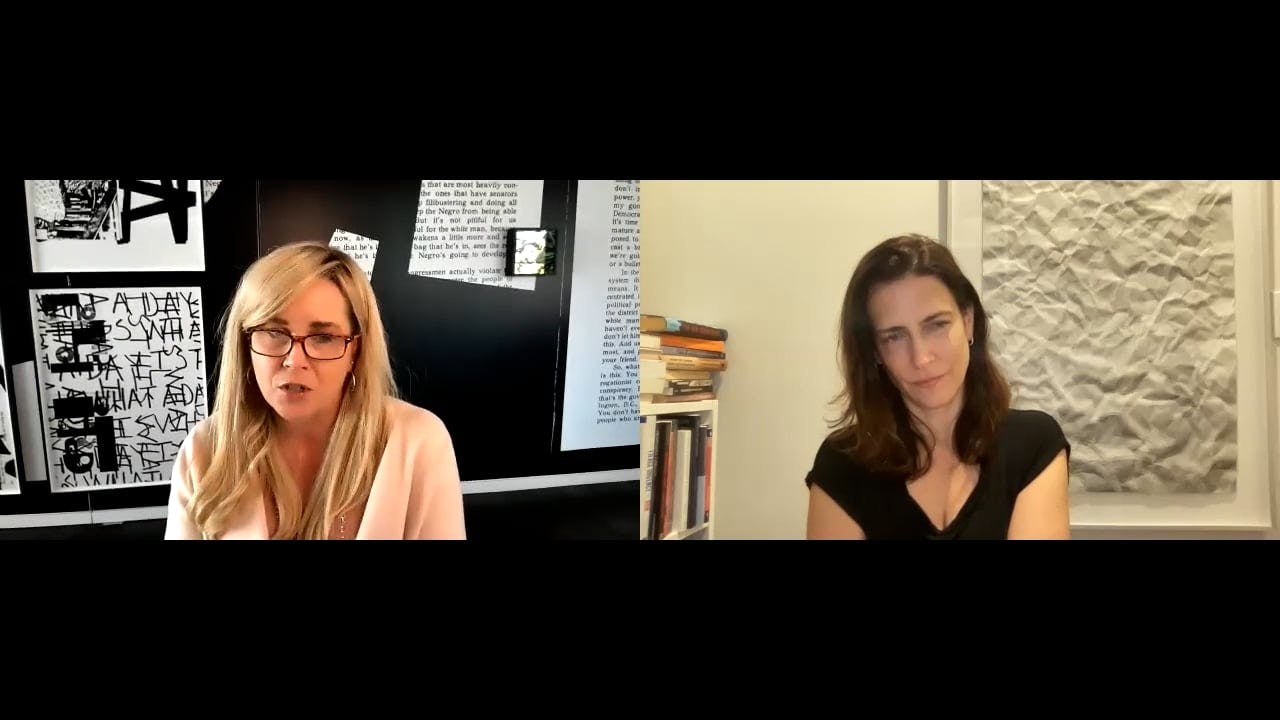
Charting a path to healing and transformation for Black women
57 min watch
In 2013, the story of an 11-year-old girl named Dasani Coates occupied five front pages of The New York Times, a first for the publication. Dasani and her seven siblings lived with their parents Chanel and Supreme in a dilapidated, city-run homeless shelter in Brooklyn—part of "an invisible tribe of more than twenty-two thousand homeless children... in the most unequal metropolis in America."
The powerful story, written by Pulitzer Prize-winning journalist Andrea Elliott, took root in the hearts and minds of Americans and prompted a cultural moment marked by political promises and outpourings of donations. New Yorkers recognized Dasani on the street; her classmates crowned her “homeless kid of the year.”
But that moment didn’t translate to a significant change in Dasani’s circumstances: “Whatever power came from being in The Times,” Elliott writes, “was no match for the power of poverty in Dasani’s life.”
So Elliott embarked on an eight-year journey to tell a fuller story. The resulting book, "Invisible Child: Poverty, Survival, and Hope in an American City," follows Dasani through her formative years as her family navigates life’s tragedies and triumphs while deeply intertwined with public systems—from homeless services to public assistance to child assistance.
"Invisible Child" draws from “thousands of records, hundreds of interviews, and many hours of video and audio recordings” to illuminate some of the most critical issues in American society—education, income inequality, racial injustice, and housing.
Last month, Elliott joined Emerson Collective Managing Director of Portfolio Communications Amy Low to discuss the book as it relates to the power of family, community, and perseverance.

FELLOWS FRIDAY SERIES: Andrea Elliott discusses her new book, Invisible Child, and what its young protagonist, Dasani, taught her about hope and dignity in the face of impossible circumstances. Elliott was an Emerson Fellow at New America from 2016.
I was stunned, after re-reading Alex Kotlowitz's, "There Are No Children Here," to find that one in five children were still living in poverty in America, decades after the book was written. So I looked at my own city of New York for stories, where there were more than 22,000 children in the shelter system in New York and at least 80,000 in some form of housing insecurity during the school year.
Dasani was 11 when we met, standing outside of Auburn Family Shelter in Fort Greene, Brooklyn, where all of the patterns of revitalization—or gentrification—have unfolded. She was growing up surrounded by wealth that wasn't hers. She possessed the rare ability to articulate what was happening in her life in such a moving way. She was funny. I wanted to write down everything that came out of her mouth. Everyone on the block knew her. She was the fastest runner. She was a dancer. She was about to land on the honor roll at school when we met. So many gifts that on the outside, you would think, “This is a superstar.” When you go into her life, you see that she and her family are barely surviving. That contrast was so stunning to me.
Family is the sort of universe of the story, and there is no separating Dasani from her mother. It's what makes the actual separation that occurs via the child protection system so painful. All ten of them were living in this one mouse-infested room at Auburn. Dasani really considered herself to be a third parent. To this day, she talks about her siblings as “my kids.” She had learned how to change a diaper before she got to kindergarten. She was her mother's helper and her chief partner in raising them. She was filled with skills and drive, the kind of things that you think will propel that kid forward—those are the very traits that also make her indispensable to her family. So, that tension is coursing through this story.

I'd never heard of Hershey. It was created by the chocolate magnate, Milton Hershey. It's in rural Pennsylvania. There are around 2,000 students right now, between the ages of four and 18. You can only qualify by being poor. You can live there year round, all needs taken care of.
When she got there, Dasani started to thrive academically. She joined the track team, then she became a cheerleader. Things were going really well until things at home fell apart. The family struggled so much to adjust to life without her that the wheels started to come off. Her little brother ran away. That set off an investigation that resulted in the children going into foster care 10 months after she got to Hershey. Dasani found it intolerable to continue to try to thrive when she knew her siblings were suffering, and she blamed herself for this.
And there were things about the experience that really bothered her. She was constantly being nudged from ‘ain't’ to ‘isn't,’ which she took as a signal that her culture of origin, of which she was immensely proud, was somehow flawed. Her closest mentors at Hershey, Jonathan Akers and Julie Williams, both of whom are Black, were trying to teach her that you're not a traitor, if you know how to speak in different ways in different environments. But she just wanted to feel like she belonged, so she returned to New York and repatriated herself to her family and to her city.
But I really think she gained so much from that Hershey experience. At the time, it was painful, but in retrospect, it’s where she learned the skills of debate and de-escalation that allowed her to get up in front of a bunch of people in a courthouse and argue the case for why her mother and she should be reunited. And she won.
When families of means are in crisis, the response is material help...When poor families are in crisis and they come under the monitoring of child protection, the opposite thing happens.
Dasani's siblings were removed from her parents, and placed in a foster care system that spent about $33,000 a month on those seven siblings—eventually, including Dasani, eight. That's nearly half a million dollars a year just on one family. It took a caseworker, Linda Lowe, to point this out to me. She said, “If you just took a fraction of that money and redirected it to putting someone in the home who could help this family stay intact when the wheels were coming off, it would make all the difference.”
When families of means are in crisis, the response is material help. If somebody is going through a serious illness, the neighbors will bring a casserole, the relatives will make phone calls. When poor families are in crisis and they come under the monitoring of child protection, the opposite thing happens. Rather than being shored up with material help, they have an increase of demands placed upon them. Imagine saying to someone who's in crisis, "Okay, before I bring you this casserole ... actually forget about the casserole, you have to now go to therapy three times a week."
This is basically what happened. I would argue Supreme and Chanel did not need parenting classes. They needed someone to work the phones, to help them access the services they were entitled to. They needed help reinstating their food stamps. Supreme was calling 311, trying to complain that there was a leak, that there was mold. All these problems were piling up on top of him, and some of it was bureaucratic lapses, but no one was helping him with those things. They were saying: you failed as a parent. 93% of the child protection cases in New York City that year were neglect only. There’s abuse, which is intention, right? But neglect is failure to provide, and it's closely correlated with poverty. Supreme and Chanel were charged with neglecting the conditions of their home and therefore, neglecting their children.
As of September, she became a college student. Dasani's success is staying at home with her mother and her two siblings, feeling rooted in her community while reaching for something better in her own life by going to LaGuardia Community College, where she's majoring in Business Administration. I know enough having been around her all this time to expect a lot more peaks and valleys. Ultimately, Dasani has always brimmed with aspiration and hope, and that's the thing that I always hold to.